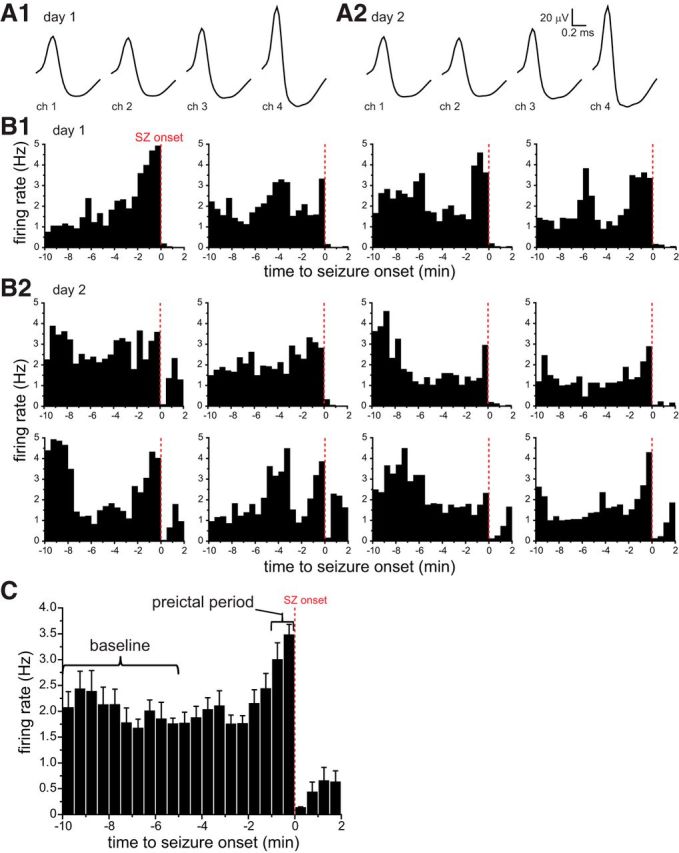Figure 5.

Preictal activity of a bursting subicular neuron that was recorded during 12 seizures over 2 d. Waveforms (A1, A2) and PETHs (B1, B2) of four seizures on 1 d (A1, B1) and eight seizures on the next day (A2, B2). The tetrode was not moved between days. On the first and second days, waveforms (A1, A2), baseline firing rates (1.8 and 2.1 Hz, respectively), symmetry indices (2.3 and 2.4), and burst indices (0.93 and 0.83) were similar. C, Average PETH of all 12 seizures for this unit. Error bars indicate SEM. Preictal activity classification was based on comparing average firing rate during the baseline period (10–5 min before seizure onset) with that of the preictal period (last minute before seizure onset). Apparent reduced firing rates during seizures are likely an artifact because of limits of recording and sorting single-unit activity during periods of high activity (see Results). ch, Channel; SZ, seizure.
